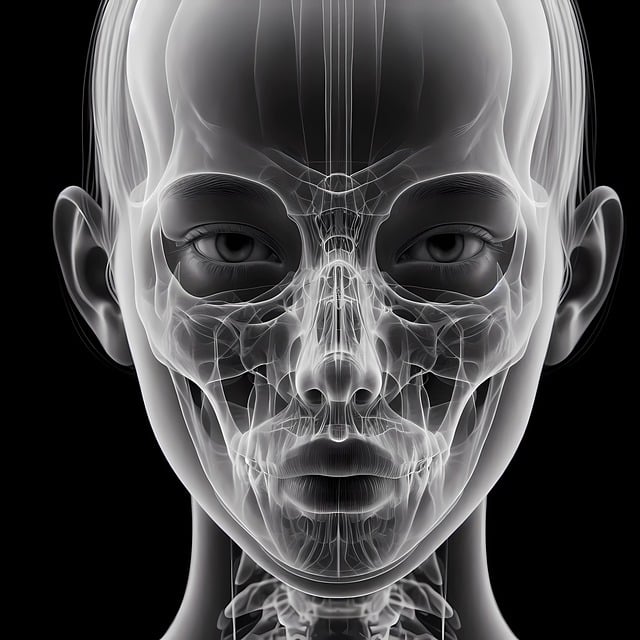Holographic medical imaging (4D imaging) revolutionizes healthcare by providing real-time 3D visualization of dynamic bodily changes, enhancing diagnosis and treatment planning in various specialties like cardiology and oncology. This technology empowers professionals to make more informed decisions, leading to improved patient care through advanced strategies. It has the potential to transform surgical planning, remote consultations, and global collaboration, ultimately improving outcomes and access to specialized care.
“Holographic medical imaging, or 4D imaging, is transforming real-time medical assessments by offering unprecedented visual clarity and depth. This advanced technology goes beyond traditional 2D and 3D imaging, providing doctors with dynamic, three-dimensional models of internal structures in near real-time. By unlocking new insights and enhancing diagnostic accuracy, 4D imaging promises to revolutionize patient care. From promising research to its growing clinical applications, this article explores the potential of holographic medical imaging to shape the future of healthcare.”
Unlocking Medical Insights: Holographic Imaging's Promise
Holographic medical imaging, or 4D imaging, represents a paradigm shift in real-time medical assessments. By capturing dynamic changes in the body over time, this technology unlocks insights that were previously inaccessible. Holographic imaging promises to enhance diagnosis and treatment planning by providing a comprehensive, three-dimensional view of internal structures and their interactions. This capability is particularly valuable in complex procedures where understanding blood flow, organ motion, or tumor dynamics can significantly impact patient outcomes.
The potential applications are vast, from cardiology, where holographic imaging can visualize heart valve movements and blood flow patterns, to oncology, where it can track the growth and metastasis of tumors. By integrating real-time data into medical practices, healthcare professionals can make more informed decisions, leading to improved treatment strategies and ultimately better patient care.
Real-Time Visualizations: Enhancing Diagnostic Accuracy
Real-time holographic medical imaging offers a groundbreaking approach to enhancing diagnostic accuracy. Traditional methods often rely on static images, limiting their ability to capture dynamic processes within the body. However, 4D imaging introduces a new dimension by providing a sequence of images over time, creating a comprehensive, three-dimensional representation of anatomical structures and pathological changes.
This technology allows medical professionals to visualize and assess organs, blood flow, and tissues in real-time, enabling more precise diagnoses and treatment planning. By observing the body’s intricate movements and transformations, healthcare providers can identify subtle abnormalities that might be overlooked in static imaging, ultimately leading to improved patient outcomes and personalized care.
4D Imaging Techniques: From Theory to Clinical Practice
The evolution of 4D imaging techniques has brought about a revolutionary change in medical assessments, offering healthcare professionals a dynamic and comprehensive view of the human body in real-time. Holographic medical imaging, at its core, is an advanced form of visualization that combines three-dimensional (3D) data with temporal dimensions, creating a fourth dimension of time. This innovative approach allows for the observation of physiological processes as they occur, providing a level of insight previously unattainable.
In clinical practice, 4D imaging techniques have found their niche in various medical specialities. From real-time monitoring of cardiovascular systems to studying the complex movements of respiratory organs, holographic imaging offers a non-invasive method to visualise and analyse dynamic biological processes. This technology’s ability to capture and represent time-based data as a 3D hologram has opened doors for improved diagnosis, treatment planning, and patient monitoring, ultimately enhancing the overall quality of medical care.
Future Applications: Revolutionizing Patient Care
The future of healthcare holds immense potential for holographic medical imaging, a revolutionary application of 4D technology. Beyond current capabilities, this evolving field promises to transform real-time assessments, enabling doctors to visualize patient anatomy and pathologies in unprecedented detail. By seamlessly integrating with advanced diagnostic tools, holographic imaging can facilitate more accurate diagnoses and personalized treatment plans.
Imagine intricate 3D models of organs, tumors, or vascular structures overlaid on a patient’s body, providing a dynamic and comprehensive understanding of their physiological state. This technology has the potential to revolutionize not only surgical planning but also remote consultations, allowing specialists from around the globe to collaborate in real-time, ultimately improving patient outcomes and access to specialized care.
4D imaging, with its ability to provide real-time, dynamic visual representations, represents a game-changing advancement in medical diagnostics. By unlocking insights hidden within patient data, holographic medical imaging promises to enhance accuracy and efficiency in healthcare. As these techniques evolve from theory to clinical practice, the future of patient care looks brighter, enabling more effective treatment plans and improved outcomes. The potential of 4D imaging to revolutionize medicine is undeniable, opening new avenues for exploration and discovery.
